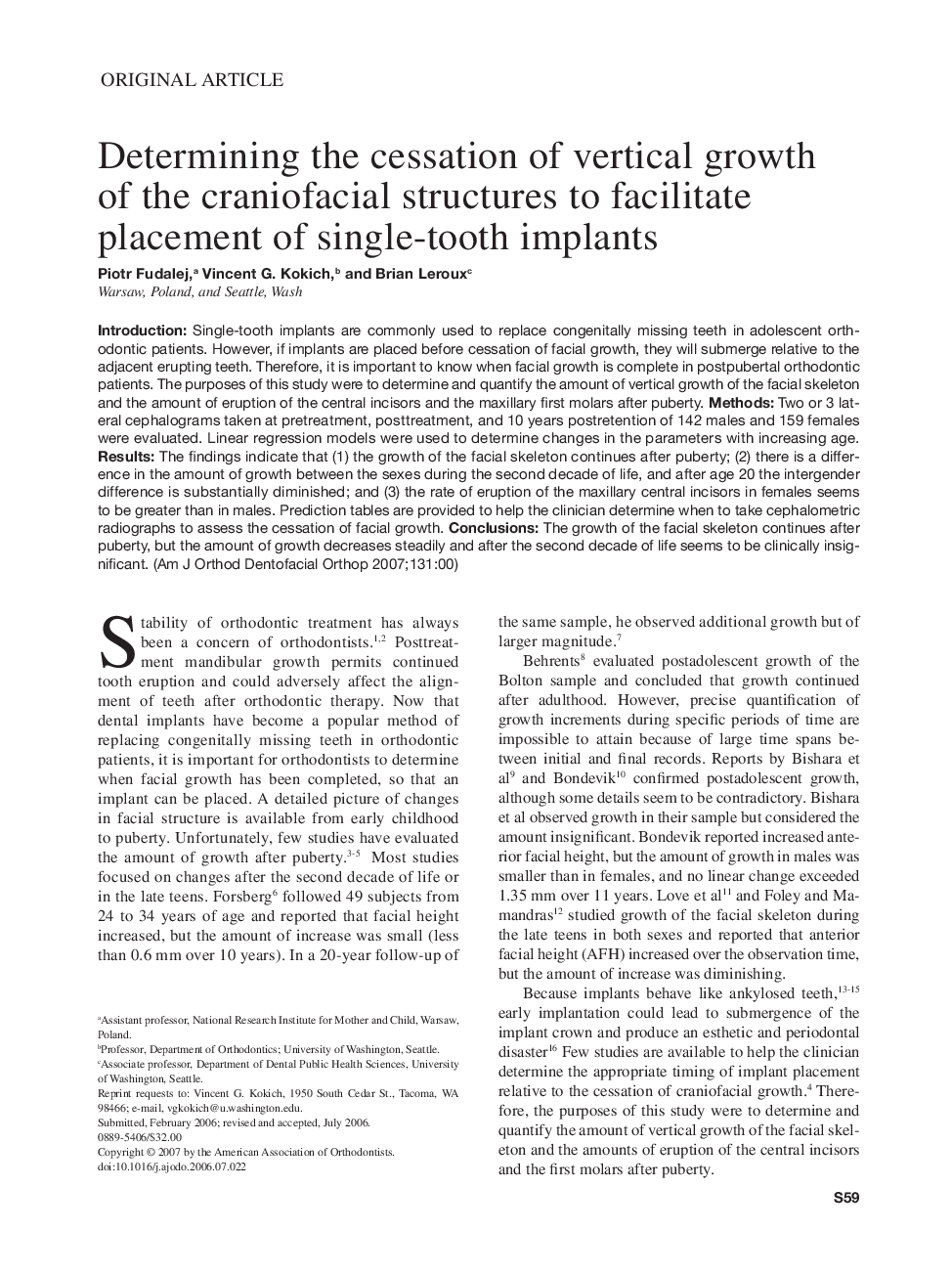| Article ID | Journal | Published Year | Pages | File Type |
|---|---|---|---|---|
| 3119596 | American Journal of Orthodontics and Dentofacial Orthopedics | 2007 | 9 Pages |
IntroductionSingle-tooth implants are commonly used to replace congenitally missing teeth in adolescent orthodontic patients. However, if implants are placed before cessation of facial growth, they will submerge relative to the adjacent erupting teeth. Therefore, it is important to know when facial growth is complete in postpubertal orthodontic patients. The purposes of this study were to determine and quantify the amount of vertical growth of the facial skeleton and the amount of eruption of the central incisors and the maxillary first molars after puberty.MethodsTwo or 3 lateral cephalograms taken at pretreatment, posttreatment, and 10 years postretention of 142 males and 159 females were evaluated. Linear regression models were used to determine changes in the parameters with increasing age.ResultsThe findings indicate that (1) the growth of the facial skeleton continues after puberty; (2) there is a difference in the amount of growth between the sexes during the second decade of life, and after age 20 the intergender difference is substantially diminished; and (3) the rate of eruption of the maxillary central incisors in females seems to be greater than in males. Prediction tables are provided to help the clinician determine when to take cephalometric radiographs to assess the cessation of facial growth.ConclusionsThe growth of the facial skeleton continues after puberty, but the amount of growth decreases steadily and after the second decade of life seems to be clinically insignificant.
